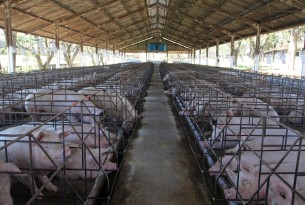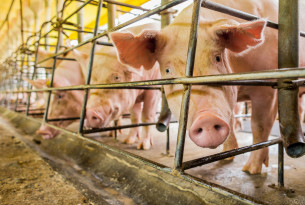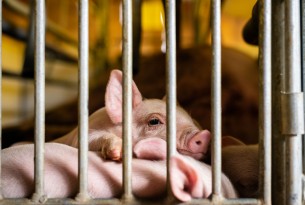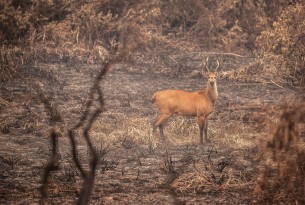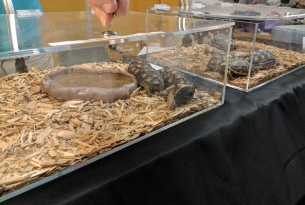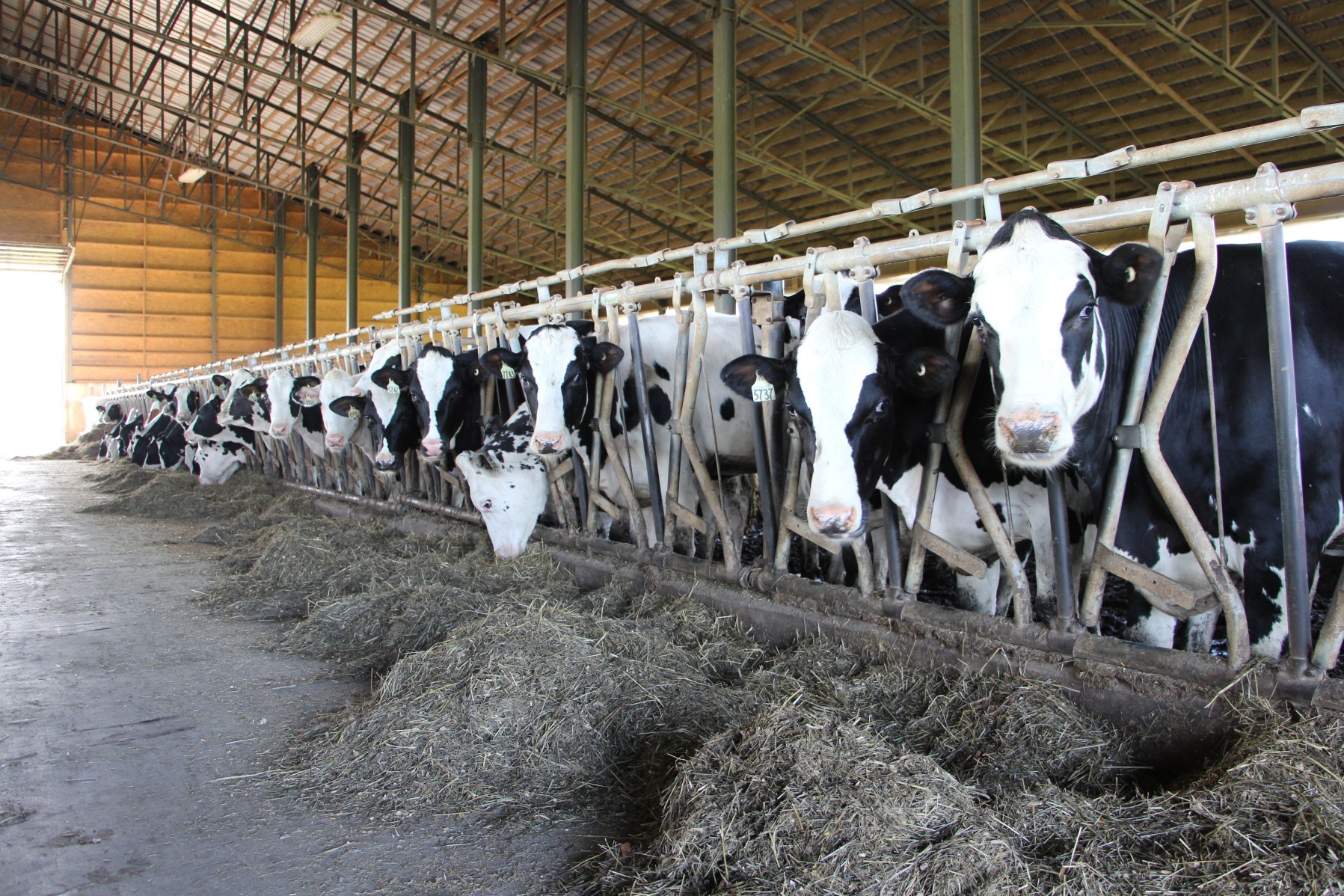
What are tie stalls for dairy cows?
Dairy cows housed in tie stall barns are tethered continuously or for part of the day, limiting their ability to move freely and express normal, social behaviours. What exactly are tie stalls and why are they a low welfare form of housing for dairy cows?
Pictured: Dairy cows housed in tie stalls on a farm in Canada. Photo credit: Shutterstock / LMLaVie
By Lynn Kavanagh, our Farming Campaign Manager
Tie stalls are a form of housing common to the dairy industry where cows are tethered at the neck to their stall, restricting their movement, their ability to socialize, graze and groom, and perform other natural behaviours.
This method of housing for dairy cows is still used extensively in Canada. Currently, approximately 75% of dairy farms use tie stall housing.
On some farms, tied cattle are permitted seasonal access to pasture, but otherwise their movements are restricted compared with cows housed in free stall barns or other loose housing systems. Free stall housing without access to outdoors also has its welfare challenges. However, when cows are given outdoor access daily (untethered and able to move around in a paddock or on pasture), their welfare improves substantially.
One important measure of welfare is whether animals display aberrant behaviour called “stereotypies.” ‘Stereotypical behaviour’ are pointless, repetitive behaviours animals perform when they experience stress or frustration with their living conditions. Cows kept in tie stalls have been shown to perform abnormal behaviors such as tongue rolling (which is associated with an inability to graze), rubbing against equipment, and bar biting, and these lessen when animals are given daily access to the outdoors. Cows in tie stalls without daily exercise opportunities will also spend more time licking and sniffing the ground or other objects and less time ruminating (an important cow behaviour). In one study, when released, tied cattle without regular outdoor access spent more time engaged in play behaviour and trotting, suggesting a positive feeling state (joy, elation) when released from confinement.
Housing attributes are extremely important to dairy cow welfare and comfort. They should be in systems that permit cows to walk around and socialize, access the outdoors, lie down comfortably (some stalls are too small for cows causing chronic health problem). Deeply bedded stalls that permit cows to lie down at comfortable helps to prevent lameness and mastitis - two common health conditions afflicting dairy cows.
An updated Dairy Code of Practice is in development by the National Farm Animal Care Council (NFACC) and a draft will soon be released for public comment. As a member of NFACC, we are pushing for the Code to include a phase out of tie stall housing and other improvements for dairy cow welfare.
Stay tuned for an update on the draft Code and how you can join us in speaking up for dairy cows!


